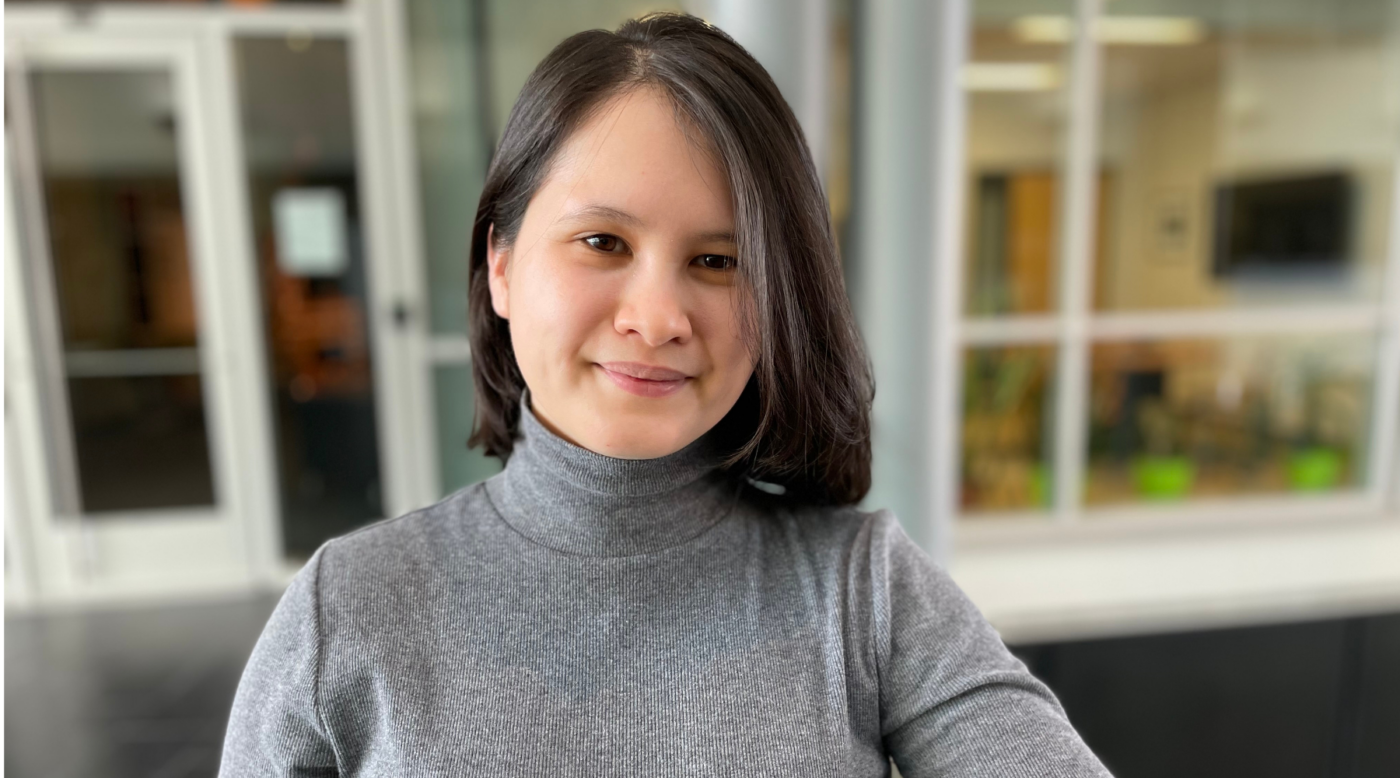News
A student committed to enhancing the representation of women and girls in science!
Published on February 11, 2025
On this International Day of Women and Girls of Science, IRIC had the opportunity to talk to Fanny-Meï Cloarec-Ung, a doctoral student in David Knapp’s laboratory. Committed to enhancing the representation of women in the sciences, Fanny-Meï stands out for her leadership and her willingness to make a real difference.
Meet the inspiring Fanny-Meï
Why do you think it is essential for women to be represented in the field of science?
Historically, women have always been under-represented in careers in various scientific fields. Although much has been done in recent years to reduce this gap, it is still not enough.
The place of women in science is essential for the quality and excellence of research.
It has been shown that diversity in research teams, for example, is a real accelerator for creativity, diversity of perspectives and the resolution of major current scientific problems. Thus, depriving oneself of women in these teams is a loss of potential talent and therefore an obstacle to the progress of research and to the deep understanding of complex scientific phenomena.
Do you have any concrete suggestions for improving their representation?
Given this established awareness, it is essential to implement concrete actions, starting with encouraging young girls to pursue scientific careers with promotional campaigns in the various educational institutions.
Highlighting women in science and their careers so that young girls can have role models to identify with is essential. Initiatives such as mentoring programs not only inspire young girls, but also help them navigate a world that is sometimes perceived as unwelcoming.
It is also essential to include training on combating unconscious bias from the earliest stages of scientific careers, to ensure that women enjoy the same opportunities as their male counterparts. Following the example of the IRIC, creating equity, diversity and inclusion (EDI) committees to assess and combat all forms of discrimination in the workplace is a first step towards a positive evolution of work environments.
How are you personally and/or professionally involved in the cause of women in science?
While thinking about these solutions to improve the representation of women, I decided to get directly involved through several initiatives that aim to promote the presence of women and inspire young girls.
In addition to the EDI committee of the IRIC, I am also involved in two other organizations: Young Women in Bio (YWIB), which is part of WIB (Women In Bio), a North American network of women in STEM (science, technology, engineering and mathematics).
The mission of YWIB is to promote scientific careers among young girls in secondary school and CEGEP. To this end, we organize, among other things, in collaboration with the four Montreal universities (UdeM, McGill, Concordia and UQAM), visits to research centers to introduce these young girls to the world of research.
In addition, we organize meetings between these girls and women with scientific careers to inspire them. We also have an ambassador program where we support young girls in the creation of their science club so that they can develop their leadership and passion for science.
“It is crucial that the media, films and books present more female role models in the field of science, not just as exceptions, but as central and accessible figures, and that everyone becomes aware of the richness that this would bring to the world of science.”
At IRIC or elsewhere, who are your inspiring female scientific role models? And why?
Throughout my career, I have had the chance to meet women with exciting careers who have made an impression on me, both in and outside the academic world, such as the WIB network. All these women who have shared their professional and personal experiences with me have inspired me to pursue my scientific studies and take a more prominent role in leadership discussions, which has greatly contributed to my personal and professional development.
As a doctoral student at IRIC, I benefited in particular from the mentorship of Julie Lessard, principal investigator of the Chromatin Structure and Stem Cell Biology Research Unit at IRIC; Sonia Cellot, assistant clinical professor in the pediatrics department at the University of Montreal; and Connie Eaves. These women guided me through the development of my project.
What are your professional aspirations in relation to the cause of women in science?
Following my doctorate, I would like to get involved in these issues of diversity in science and move towards government or international organizations to develop and implement solutions.
For example, I would like to participate in the creation of programs that offer academic opportunities, such as scholarships, research internships, or international collaborations, specifically designed to support women in underrepresented or economically disadvantaged regions.
These programs would enable these women to access quality academic resources, but also to benefit from a network of mentors and inspiring role models to boost their confidence and commitment to science.
What could we do collectively to encourage more women to take an interest in science?
It has to be a collective effort by our society to encourage more women to take an interest in science. It is important to encourage girls and women from a very young age to take up space, to follow their aspirations, even the most ambitious ones.
Highlighting women in all types of scientific careers makes these dreams and aspirations all the more accessible. It is crucial that the media, films and books present more female role models in the scientific field, not just as exceptions, but as central and accessible figures, and that everyone becomes aware of the richness that this would bring to the world of science.
